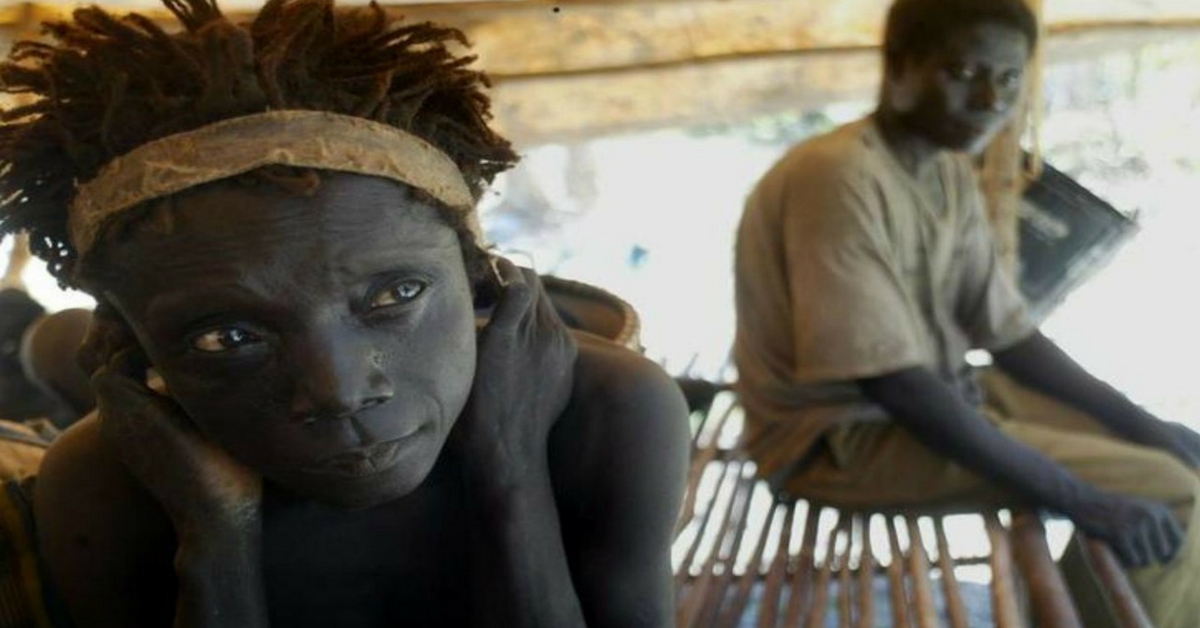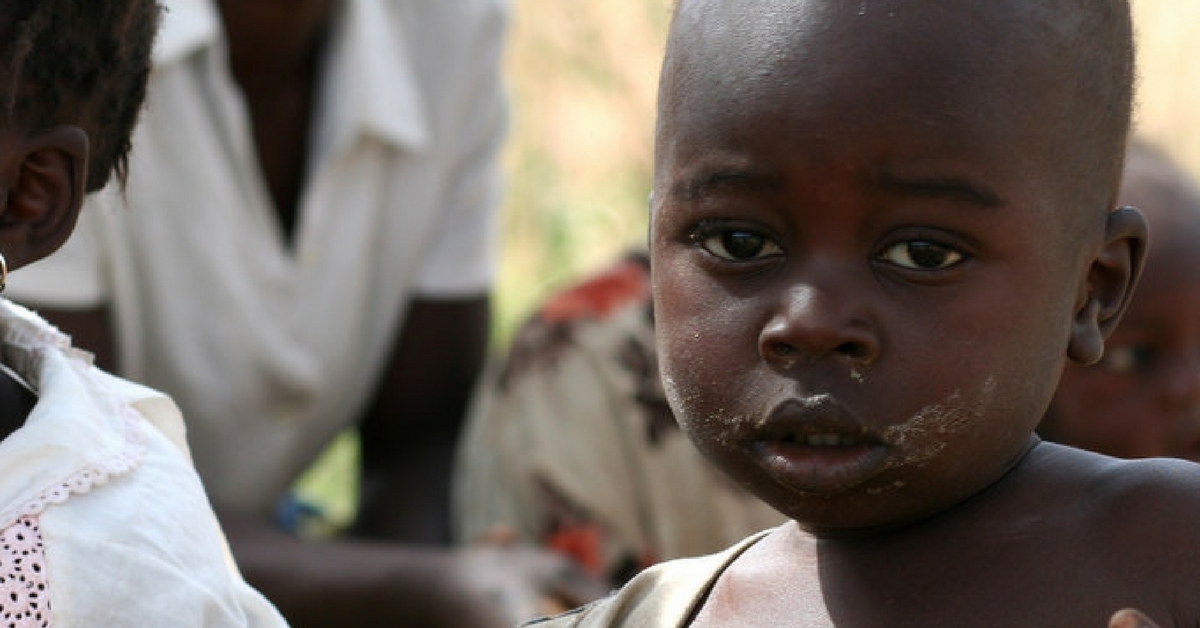Is This Andaman Tribe in a Tourist Zoo? Time to Wake up and End This ‘Safari’!
The Jarawa have been occupying the Andaman rainforests for years.

Imagine you wake up and start going about your normal day. Your better half prepares breakfast for your children, and you get dressed for the office. As you open the door to leave to work, you spot a bus packed with tourists parked right on the street where you live.
People are pointing at you from the bus, exclaiming excitedly. As your children emerge from the house to go to school, the tourists in the bus throw bananas at them. And as if all at once, the tourists start taking out cameras, with intrusive flashes – taking photos of your every move.
Would you feel violated and insecure? What if you were trying to go to work, and a bus stopped, and its occupants started making faces at you while throwing bits of food hoping you catch them. Would you feel like a lesser being?
The bus full of tourists, like the hundreds before it and the hundreds after it, represents the continuous breach of privacy of one of India’s oldest indigenous people.
The shameful concept of the Human Safari:-

Every now and then, bus-loads of tourists descend upon the quiet Andaman island. Talking in animated voices, they have come for the chief attraction. “People of the jungle”, the “wild tribes”, and other exaggerated adjectives have been used by wily tour operators, to sell this chief attraction – sightings of the Jarawa tribe.
The tourists are instructed not to throw food or clothes at the tribals, or try and establish contact. But it is perfectly okay to point, first with fingers and then a camera. The tribals, who had been promised safety by the Government, are being sold as the chief attraction of a holiday package.
Genteel folks from urban jungles are surprised to see their hunter-gatherer counterparts. They are shocked at their often primitive ways. What these city folks don’t understand, is that most of mankind descended from people who used these primitive ways. In fact, if anything, the tribes are closest to what man used to be like. Hunting and gathering, instead of sitting in an air-conditioned cabin.
But, of course, we are more civilised. Civilised enough, to hawk the island home of a tribal populace as a tourist attraction. And organise hundreds of buses and trucks to ply on the arterial road that goes straight through the Jarawa reserve.
Who are the Jarawa?

The tribe belongs to the Negrito group of tribal communities, including the Onge, the Great Andamanese and the Sentinelese living on the Andaman islands. Traditionally hunter-gatherers, they have lived and flourished in the rainforests of the islands for about 20,000 years.
However, they are fast disappearing. From a population of 5000, 150 years ago, they number just around 250-300. The total population of the Andaman and Nicobar islands is around four lakh. The disparity speaks for itself.
There has been tremendous pressure over the years on these tribes just to survive. The reasons are manifold and include deforestation which erodes their habitats and settlements. The equation between the Jarawas and the outside world has changed.
The indigenous people don’t trust the mainstream. And why should they? It is the civilised man, responsible for the Andaman Grand Trunk Road-that rips straight through prime Jarawa territory. According to Samir Acharya of the Society for Andaman and Nicobar Ecology, closing the ATR would stop the interaction between Jarawas and settlers.
The Jarawas, like all indigenous people, are fiercely protective of their turf. From as early as the 1960s, they opposed the construction of the ATR, resorting to hostility and attacking workers. In 1976, work was temporarily stalled. However, it resumed soon, and the Jarawas paid the price.
Their thick forest became accessible to the outside world. Settlers increased in number, trees were being felled, and poaching rose considerably, threatening the delicate ecosystem of the tribe. The developmental authorities turned a deaf ear to the protests of environmentalists, anthropologists and the Jarawas themselves. Today, the road carries traffic right through the heart of the Jarawa reserve. Further cause for concern for them.
The biggest and most underrated risk that the tribal population faces from the outside world is disease. Contact with outsiders has brought disease to this otherwise insular community.
In 1990, when a measles epidemic hit, around 60% of them were infected. The ATR provides the outside world with an intimate experience in the Jarawa heartland. The food the tourists offer the Jarawas contains sugar, artificial preservatives and saturated fat-something their systems cannot adjust to.
This significant change in diet can alter their metabolism, exposing them to urban ailments like diabetes and heart ailments.
Settlers and tourists also come with a multitude of vices. Thanks to them, the Jarawas have been exposed to alcohol, gutkha and tobacco. This, amongst other things, has led to sexual exploitation of the indigenous population’s women.
A shocking video emerged, in which a policeman was instructing a group of tribal women to dance for his and the tourist’s entertainment. The policeman commanded, and the girls obeyed. The video was met with rage around the world.

The exploitation of indigenous people had come to the forefront.
It was an avalanche of embarrassment that followed. The Indian Government promised to make amends and promised to protect the tribes from exploitation from the outside world-something that hasn’t happened yet.
Even today, at the crack of dawn, buses and jeeps line up outside, preparing to enter the Jarawa reserve to get a glimpse of the tribe members.
The Jarawa are one of the earliest inhabitants of the beautiful Andaman Islands. Nomadic, they hunt what they eat and even collect fruits and tubers. They are hostile towards outsiders, with good reason.
These people live off the land, leaving a zero carbon footprint, yet are regarded “primitive” and “exotic”, with tour operators bribing cops to take customers to meet the indigenous people.
The Jarawa belong to the island and are a vital part of the forest’s ecosystem. We are only recent invaders into their space. They’ve been around for ages.
You may also like:- This Indian Island Is Home to the World’s Last Isolated Humans
Indigenous people are legitimate humans, with thoughts and feelings just like you and me. It is time to stop treating them like animals and maybe taking steps to ensure their identity remains preserved.
Like this story? Or have something to share? Write to us: [email protected], or connect with us on Facebook and Twitter.
NEW: Click here to get positive news on WhatsApp!
If you found our stories insightful, informative, or even just enjoyable, we invite you to consider making a voluntary payment to support the work we do at The Better India. Your contribution helps us continue producing quality content that educates, inspires, and drives positive change.
Choose one of the payment options below for your contribution-
By paying for the stories you value, you directly contribute to sustaining our efforts focused on making a difference in the world. Together, let’s ensure that impactful stories continue to be told and shared, enriching lives and communities alike.
Thank you for your support. Here are some frequently asked questions you might find helpful to know why you are contributing?


This story made me
-
97
-
121
-
89
-
167











